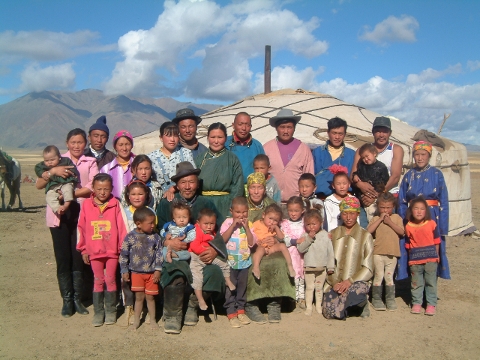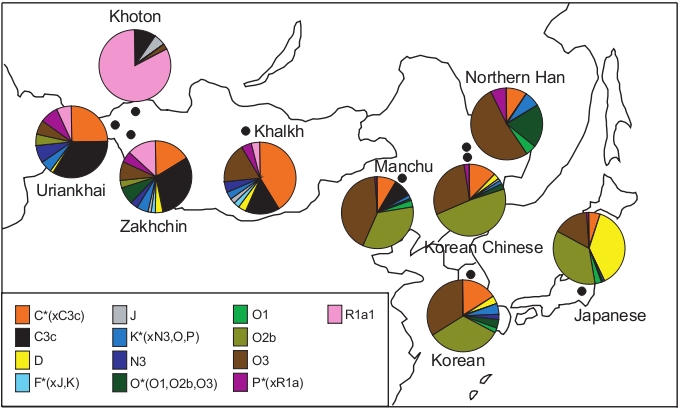
About 20 ethnic group reside in Mongolia. On the basis of previous studies, it is believed that Mongolians have played a pivotal role in the peopling of Central and East Asia. However, the genetic relationship among these ethnic groups have remained obscure, as have their detailed relationships with adjacent populations. In this study, we analyzed the binary and STR polymorphisms of X and Y chromosomes in East Asian populations, including four Mongolian ethnic groups (Khalkh, Uriankhai, Zakhchin, and Khoton). Among these four Mongolian populations, the Khalkh, Uriankhai, and Zakhchin populations showed relatively close genetic affinities to each other and to Siberian populations, while the Khoton population showed a closer relationship to Central Asian populations than to even the other Mongolian populations. These findings suggest that the major Mongolian ethnic groups have a close genetic affinity to populations in northern East Asia, although the genetic link between Mongolia and Central Asia is not negligible. In addition, we revealed that the Khoton, Uriankhai, and Zakhchin populations had a higher background linkage disequilibrium (LD) for Xq13.3 in X chromosome. The finding indicates that these populations could play an important role in the initial mapping of complex disease genes.

